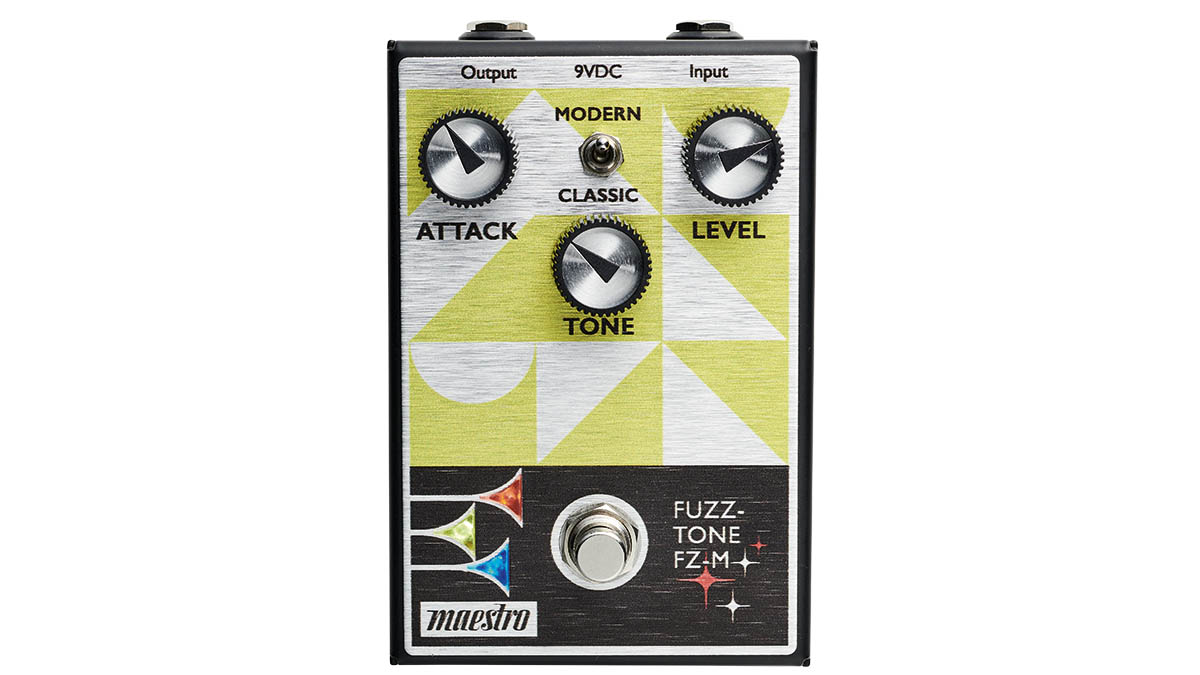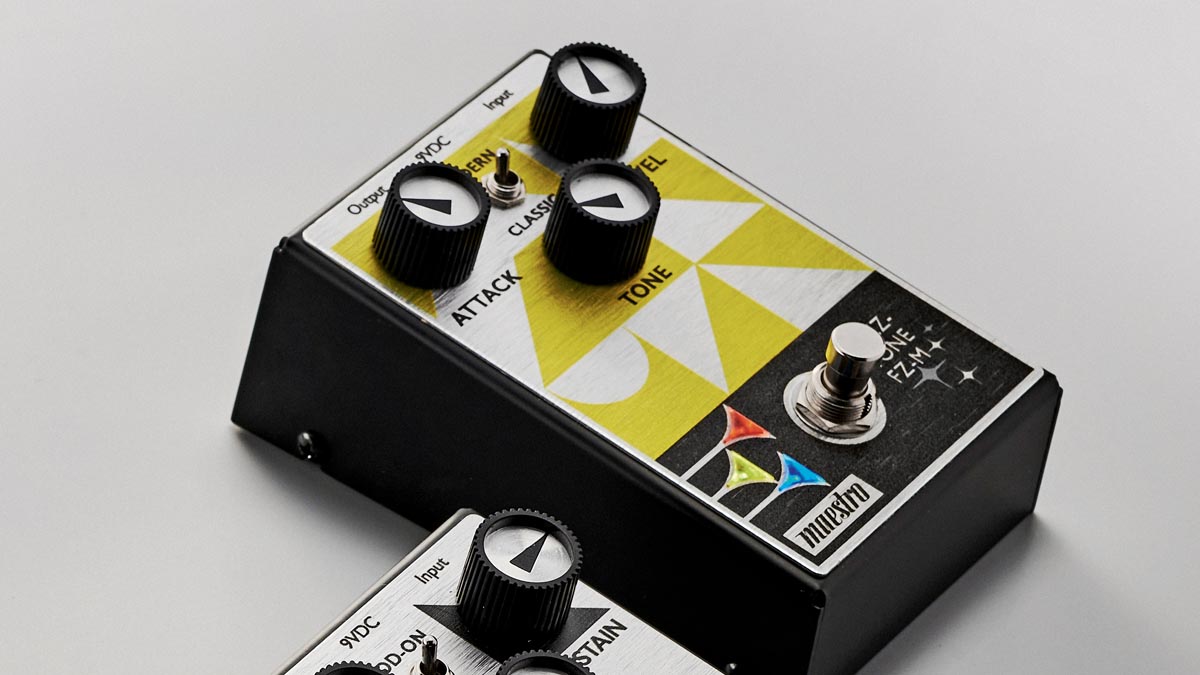Guitar World Verdict
A versatile fuzz that's built like a tank and nails the classic sounds, and a lot more besides.
Pros
- +
Keef fans will love it.
- +
Modern/Classic modes extend its appeal.
- +
Solid build and cool design.
- +
Sensibly priced.
Cons
- -
A little bulky.
You can trust Guitar World
It’s 1965, and the Rolling Stones have released a new single. (I Can’t Get No ) Satisfaction is an instant sensation due to Keith Richard’s unforgettable riff, which introduced the sound of a fuzz pedal to a worldwide audience.
While there had been records featuring fuzz before, this was the one that really put it on the map and sparked a demand from guitar players for the sound. The fuzz pedal that Keith used was the Maestro FZ-1, which first saw the light of day in 1962 and, 60 years on, Gibson have revived the Maestro brand name for a series of new pedals.
If you’ve never heard of Maestro that may be because the original brand became extinct in 1979, but you’ll certainly have heard its gear in action – that lovely liquid phasing on the Isley Brothers’ That Lady was a PS-1 Phase-Shifter, the distinctive wah intro on the Theme From Shaft was a BG-1 Boomerang Wah and the various models of the Echoplex tape echo were used by many, not least Jimmy Page.
The five new all-analog Maestro pedals – the Fuzz-Tone FZ-M, Discover Delay, Comet Chorus, Ranger Overdrive and Invader Distortion – are the sort of substantially-built pedals that could double as a doorstop if you weren’t making music.
Although not huge, they are perhaps a tad larger than you would expect for a three-knob single footswitch pedal, but have all the connectivity, including the socket for a 9-12V power adapter, at the top end for ease of pedalboard use.
The pedals can also run from a 9V battery accessed by loosening two screws, one each side of the pedal, and lowering a bottom plate which hinges on the remaining two screws.
There’s a slightly sloping top panel to make footswitching easier, plus you’ll know when each pedal is active as the red, yellow and blue Maestro bugle logo lights up. Perhaps the main selling point, though, is that each pedal features two distinct sounds called up by a small toggle switch; “Two pedals in one” says Gibson.
The FZ-1 Germanium fuzz pedal went through some different incarnations in its lifetime including a transistor change in the FZ-1A from 1966, the 1968 Robert Moog designed FZ-1B with Silicon transistors, the FZ-1S in the 1970s and even a limited numbers re-issue of the FZ-1A by Gibson in the 1990s.
The latest in that line is this new FZ-M which comes equipped with two distinct sounds – a nod to the past in ‘Classic’ said to be based on the FZ-1A sound, plus ‘Modern’ which Gibson describes as a fuller and heavier tone.

The Classic setting is really all you need to nail that Satisfaction riff. Turn up that Attack knob and you’ll be getting a cool mid-1960s fuzz sound that is at the same time lean and saturated with a raspy edge.
It’s a bit of a scooped sound with attenuated low end/lower mids, but it’s powerful. It’s at its brightest with the tone knob full up, but all points on the knob sound good – just roll it back to cut down the high end presence depending on your needs.
Get past perhaps about 2-0’clock though and things start to get nasty as the lower end is sacrificed for the sort of harsher upper mids and treble that’ll slice your eardrums
If you switch over to the Modern sound there’s a quite different experience, and the Tone knob is key to everything here. Running with the Tone knob fully left offers the fattest sound with plenty of low end girth but still enough top end to stop things getting woolly, turning the knob up adds treble all the while reducing the low end providing plenty of useful tones on its arc of travel.
Get past perhaps about 2 o’clock, though, and things start to get nasty as the lower end is sacrificed for the sort of harsher upper mids and treble that’ll slice your eardrums. From 60s garage, through classic rock to hooligan, this pedal should satisfy a lot of fuzz needs.
Specs
- FEATURES: True bypass, two different fuzz types
- CONTROLS: Attack (Fuzz), Tone, Level, Modern/Classic switch, Bypass footswitch
- CONNECTIONS: Standard input, standard output
- POWER: 9V battery or 9-12V DC adaptor
- DIMENSIONS: 84mm (w) x 126mm (d) x 60mm (h)
- CONTACT: Gibson
Trevor Curwen has played guitar for several decades – he's also mimed it on the UK's Top of the Pops. Much of his working life, though, has been spent behind the mixing desk, during which time he has built up a solid collection of the guitars, amps and pedals needed to cover just about any studio session. He writes pedal reviews for Guitarist and has contributed to Total Guitar, MusicRadar and Future Music among others.
“The original Jordan Boss Tone was probably used by four out of five garage bands in the late ’60s”: Unpacking the gnarly magic of the Jordan Boss Tone – an actual guitar plug-in that delivers Dan Auerbach-approved fuzz
“This is a powerhouse of a stompbox that manages to keep things simple while offering endless inspiration”: Strymon EC-1 Single Head dTape Echo pedal review












